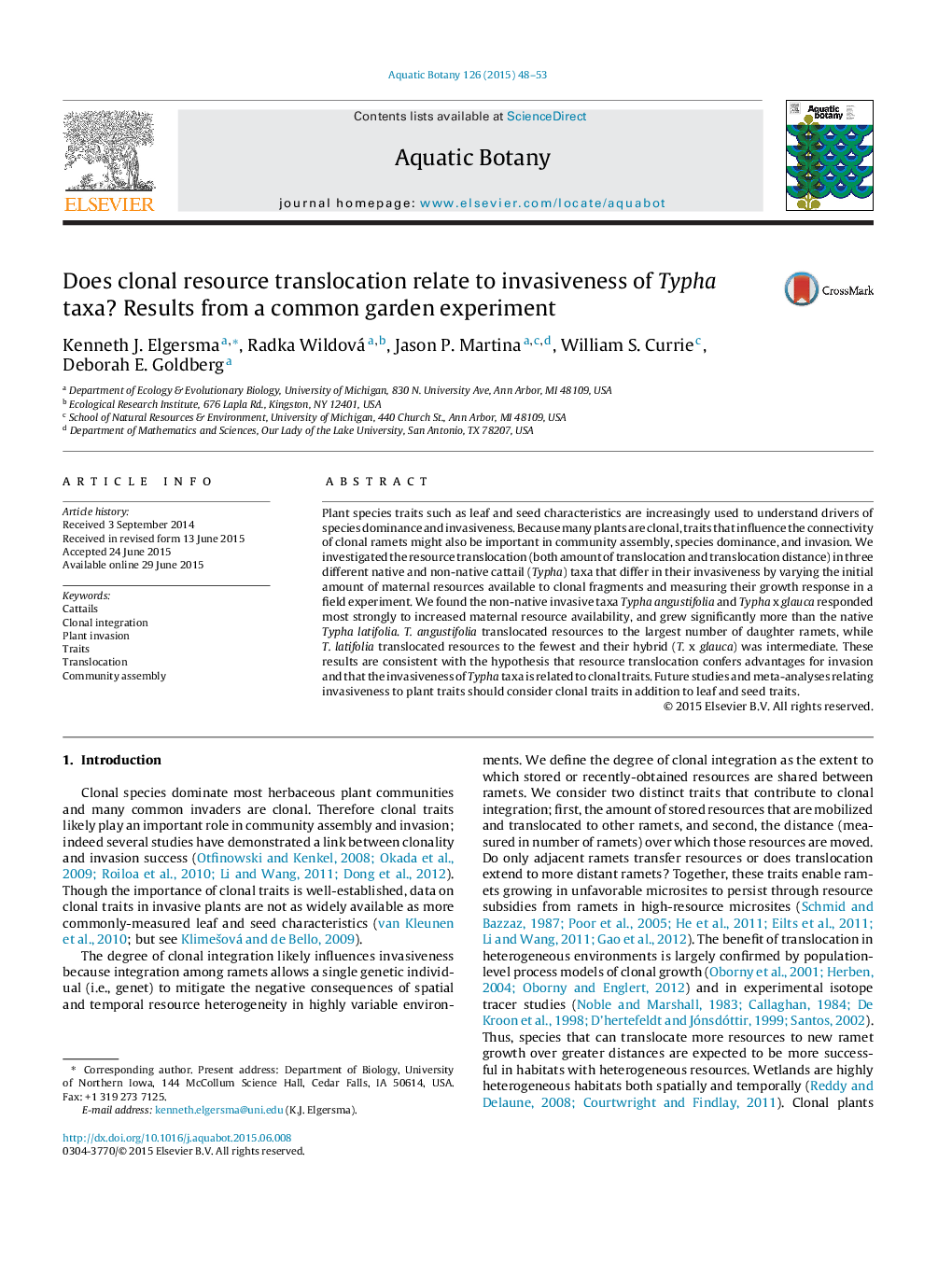| Article ID | Journal | Published Year | Pages | File Type |
|---|---|---|---|---|
| 6381739 | Aquatic Botany | 2015 | 6 Pages |
â¢Many invasive plants are clonal, but clonality's role in invasion is rarely tested.â¢More invasive Typha taxa show evidence of greater translocation.â¢More invasive Typha show evidence of translocation over greater distances.
Plant species traits such as leaf and seed characteristics are increasingly used to understand drivers of species dominance and invasiveness. Because many plants are clonal, traits that influence the connectivity of clonal ramets might also be important in community assembly, species dominance, and invasion. We investigated the resource translocation (both amount of translocation and translocation distance) in three different native and non-native cattail (Typha) taxa that differ in their invasiveness by varying the initial amount of maternal resources available to clonal fragments and measuring their growth response in a field experiment. We found the non-native invasive taxa Typha angustifolia and Typha x glauca responded most strongly to increased maternal resource availability, and grew significantly more than the native Typha latifolia. T. angustifolia translocated resources to the largest number of daughter ramets, while T. latifolia translocated resources to the fewest and their hybrid (T. x glauca) was intermediate. These results are consistent with the hypothesis that resource translocation confers advantages for invasion and that the invasiveness of Typha taxa is related to clonal traits. Future studies and meta-analyses relating invasiveness to plant traits should consider clonal traits in addition to leaf and seed traits.
